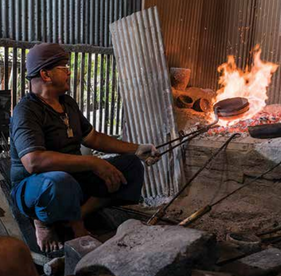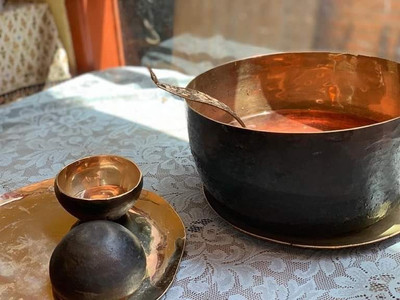
Nestled among the narrow alleyways and canals of Bangkok lie hidden worlds, remnants from older days, with crafts that are vanishing in pace with the rise of skyscrapers and highways. Explore them, before they vanish.
In Baan Bu they make Khan Long Hin or “stone bowls”, an ancient metal-craft using a stone-finishing technique on bronze. Famous for keeping water clear and cool, they are of great value, used in royal or auspicious events. Distinguished by its texture, beautiful decor and deep shine, it resonates like a bell when struck.
Over 100 families used to make “stone bowls” in Baan Bu, but only one family of craftsmen is left. Hammering out the shapes, each of 5 furnaces have different functions, the final stage creates intricate designs but with one mistake, the artist must start over.
In Baan Bat, you’ll find a centuries-old craft of alms-bowls. Traditionally carried by Buddhist monks around neighborhoods at dawn to collect alms, only a few families still produce around 50 alms-bowls a month. Each bowl is made from eight strips of steel that represent Buddha’s Eightfold Path. These strips are fired for six hours, hammered into curves with bodhi-leaf shapes at the corners, polished and covered in lacquer. There are various shapes, including hua sara (tiger head), with different people crafting each step.

The story of Baan Krua begins centuries ago when conflicts caused Muslim Chams to flee into Laos and Cambodia. Some went to Ayutthaya, bringing their exquisite silk-weaving skills. Today, the last two silk weavers continue the skills passed through generations, with teak looms and hand dyeing, selling their silks to local tailors. Their workshops were made famous by the legendary founder of the Thai silk industry, Jim Thompson, in the 1950s and 1960s, which he used as his factories. His home, located on the opposite side of the canal, is now a museum, an ideal combination with a visit to Baan Krua.

Come with 8th Wave and try out these crafts with us. Check us out or get in touch with our team!



















Comentários